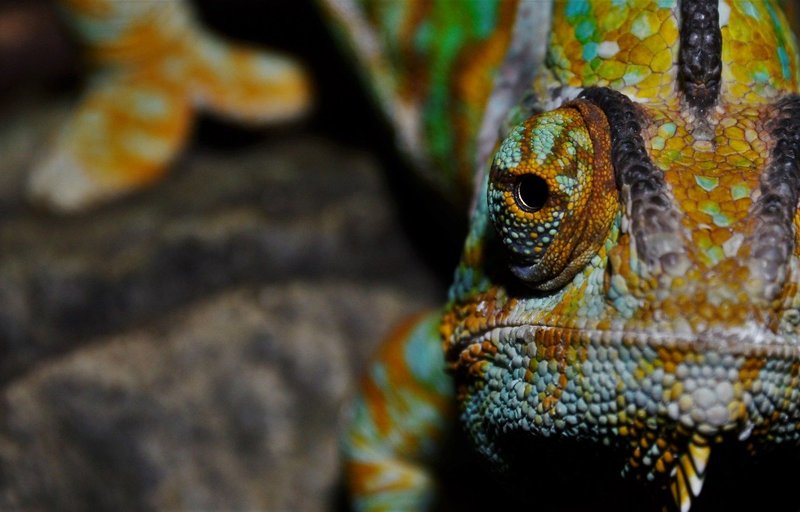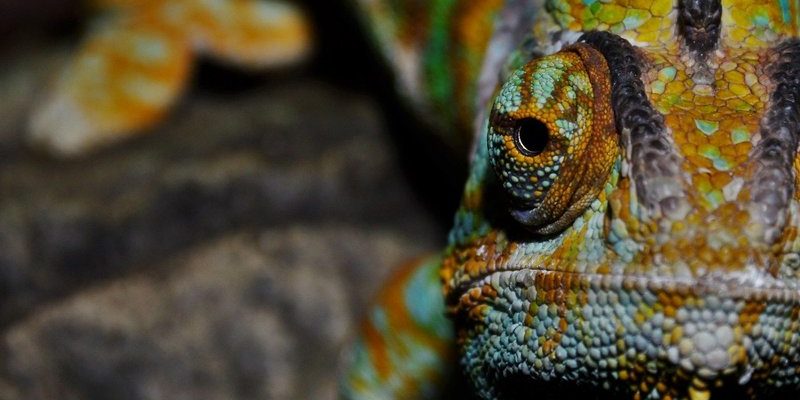
Imagine having a pet that can change colors not just for camouflage but also to express its mood! The veiled chameleon is like the dramatic actor of the lizard world. It hails from the mountainous regions of Yemen and Saudi Arabia, where it thrives in both arid and lush environments. If you’re considering adding one of these captivating creatures to your home or just want to learn more, buckle up! Here are ten surprising facts that will leave you enchanted.
The Color-Changing Marvel
One of the most standout features of the veiled chameleon is its ability to change color. You might think it’s all about camouflage, but there’s more to it. Chameleons change color as a response to various factors, such as temperature, light, and even their emotional state. For instance, if a veiled chameleon feels threatened, it might shift to darker tones as a defense mechanism. But here’s the thing—this color change is not just about hiding; it can also signal aggression or readiness to mate. Imagine wearing your mood on your sleeve, but in a rainbow of colors!
Another fascinating aspect is how they change colors. The cells under their skin contain pigments and special crystals that expand or contract. This is a bit like having a wardrobe that adjusts itself based on how you’re feeling. So, if you’re ever lucky enough to observe a veiled chameleon in different lighting, you’ll see its colors dance and shift in a breathtaking display.
A Unique Head Crest
The veiled chameleon is easily recognized by its distinct crest of spikes that runs along its head and down its back. This dramatic appearance isn’t just for show; it serves multiple purposes. For one, the crest can make the chameleon look larger and more intimidating to potential threats. It’s a sort of built-in peacock tail, designed to impress both rivals and mates.
You might be wondering why this is important. In the wild, competition among males can be fierce. A larger, more colorful chameleon has better chances of attracting a female and warding off challengers. Next time you see one, take a moment to appreciate this evolutionary adaptation that enhances its survival chances.
Defensive Behavior and Camouflage
While we’ve touched on color change, it’s essential to dive deeper into how veiled chameleons use this skill for survival. When threatened, they often display a defensive posture, puffing up their bodies and showing off those vibrant colors as a warning. It’s like a warning sign saying, “Back off, I’m not to be messed with!”
In addition, they have a knack for blending into their environment. With their ability to mimic the colors of the leaves and branches around them, they can become nearly invisible to predators. This is particularly vital in their natural habitat. Just picture a leaf moving; if you’re not paying attention, you might think it’s just a breeze!
Vision Like No Other
Chameleons, including the veiled chameleon, have eyes that can move independently of each other. This means they can look in two different directions at the same time, which is a vital skill for spotting both prey and predators. Imagine trying to find your favorite snack while keeping an eye out for potential dangers—pretty handy, right?
This unique vision allows veiled chameleons to have a full 360-degree view of their surroundings. Coupled with their keen ability to discern colors, they’re not just passive observers; they’re strategic hunters. When they spot a delicious insect, they can laterally coordinate their movements to strike with incredible precision.
A Carnivorous Diet
You might think of chameleons as slow-moving herbivores due to their gentle demeanor. However, the veiled chameleon is primarily carnivorous and enjoys a diet rich in insects. Crickets, roaches, and even small mice are on the menu. This is essential to their health, as they need specific nutrients found within these protein sources.
When keeping a veiled chameleon as a pet, it’s crucial to replicate its natural diet. You’ll need to be dedicated to providing a variety of insects and supplements to keep your pet healthy and thriving. Honestly, it can be a bit of a commitment, but watching your chameleon stalk and catch its prey is utterly fascinating!
Temperature Regulation is Key
Another interesting fact about veiled chameleons is that they are ectothermic animals, meaning they rely on external heat sources to regulate their body temperature. This is why having a proper habitat setup is so important. Their enclosure should have a basking area with a heat lamp to mimic the sunny environments of their natural habitat.
You might find it surprising, but chameleons can’t generate heat themselves. Instead, they move between basking spots and cooler areas in their enclosure to maintain an optimal temperature. If you’re setting up a home for one of these creatures, this aspect needs serious consideration to ensure your chameleon stays healthy and happy.
Interesting Social Behavior
Though they seem solitary, veiled chameleons do have social interactions, especially during mating seasons. Males can be quite territorial, often displaying their colors and puffing up to assert dominance over another male. If two males encounter each other, expect some colorful and possibly aggressive displays as they vie for attention.
Here’s the catch, though: female veiled chameleons are generally less aggressive and can even be quite social among themselves. They’ll often exhibit more relaxed behavior, especially when basking. So, while they may not be the cuddliest pets, their interactions provide a fascinating glimpse into their world!
Breeding and Egg Laying
If you’re thinking about breeding veiled chameleons, there are some important things to consider. Female veiled chameleons can lay eggs even without mating, a process known as parthenogenesis. This means a female could be pregnant without having ever been with a male! However, if breeding is your goal, providing a suitable environment for mating is vital.
Once a female lays her eggs—typically around 20 to 40—you’ll need to create an incubating environment that mimics the warm conditions of their natural habitat. This is crucial for the eggs’ development. Watching baby chameleons hatch and grow is quite the rewarding experience and a unique look into the lifecycle of these charming creatures.
Closing thoughts:
So, there you have it! Ten intriguing facts about the veiled chameleon that showcase its unique adaptations and behaviors. Whether you’re simply curious or considering bringing one into your home, there’s plenty to appreciate about these colorful reptiles. They’re not just a pretty face; they’re complex creatures that require thoughtful care and a bit of dedication. If you do decide to welcome one into your life, you’ll find that they can offer endless fascination and joy.

